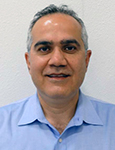To Fixture or Not?
 A PCB carrier can reduce variations on solder joint geometries.
A PCB carrier can reduce variations on solder joint geometries.
Eliminating defect opportunities by minimizing process variation is a key concept of Lean manufacturing. Fixturing is often a key ingredient in that. However, many contract manufacturing customers see fixturing as an unnecessary non-recurring engineering (NRE) expense. The reality is fixturing does add cost, but it can also save money in production. More important, printed circuit board (PCB) technology is driving the need for greater use of fixturing. Consequently, the decision on whether to fixture or not is being made more frequently.
Use of a printed circuit board assembly (PCBA) carrier for fixturing has several benefits, including:
- Support for the PCBA and larger components.
- Elimination of PCB “rails,” which could reduce PCB cost.
- Repeatable and time-efficient setup.
- Minimization of mechanical stress.
- Minimization of thermally induced stress.
Support for PCBA and larger components. PCB fabrication technology is enabling the design and fabrication of high density interconnect (HDI) and thinner PCBs, as well as much thicker high-layer count, larger PCBs with complex internal interconnections. Assembly and test process tooling and flow should be designed to minimize mechanical and thermally induced stress on these PCBAs.
Larger components such as high-pin-count BGAs, multichip modules (MCMs) or larger SMT connectors could potentially get warped during soldering processes. Proper fixturing can provide a stable surface to support the PCBA throughout the manufacturing process from screen printing through reflow, or as needed through wave soldering, subsequent cleaning processes and test.
Elimination of PCB rails. Breakaway rails are typically used as part of multi-up PCB panels for smaller PCBs, and even as a single-up PCB panel if the board isn’t a standard rectangular shape or has components that are too close to its edges for automated handling. Depending on the board shape and size, a panel that is designed to be transported by itself during assembly processes, with no additional carrier, could end up with excessive “breakaway areas” that increase PCB area and cost. Depending on the bare board and assembly details, upfront planning to use a fixture as part of the assembly flow may enable use of more area-efficient multi-up PCB panels or eliminate the addition of breakaway rails entirely.
Repeatable and time-efficient setup. Use of dedicated carriers to host a PCB or multi-up panel during assembly processes can improve setup repeatability and time. Ensuring a repeatable mechanical setup to support the PCB reduces assembly process variation.
Minimization of mechanical stress. Proper fixture design to support PCBA during assembly processes minimizes the in situ mechanical stress on the board, components and their internal interconnections as well as stresses to the existing soldered joints on a typical densely populated PCBA with components on both sides.
PCBs assembled in panel form, either in single or multi-up, require an additional depaneling operation to separate the board into its final form. Fixturing provides an opportunity to eliminate or reduce the extent of this depaneling operation.
Minimization of thermally induced stress. Thermally induced stresses on PCBAs, both in situ during soldering processes, as well as after the soldered interconnections, can be minimized by utilizing a carrier during the soldering operation. When a PCB and components warp during reflow or wave soldering, it increases the number of soldering defects and the stress in soldered interconnections. Reducing variation on the effective relative positions of surfaces to be interconnected during soldering is important to reducing soldering defects. Use of a PCB carrier to achieve this mechanical constraint during solder joint formation will in turn reduce variations on the final solder joint geometries.
On the other hand, as with other alternative engineering solutions, there are perceived disadvantages of using dedicated carriers to load and unload the PCBAs, manage their storage, usage and procurement costs. Viewed from the perspective of technological changes that are resulting in far more delicate PCBAs, fixturing represents a relatively low-cost solution compared with the costs associated with handling or thermally induced defects. And when the total amount of savings in terms of reduced substrate material use, processing time and improved first-pass yield are considered, fixturing often pays for itself.
is vice president of engineering at Sigmatron International (sigmatronintl.com); yousef.heidari@sigmatronintl.com.
Register now for PCB WEST, the largest trade show for the printed circuit design and electronics industry! Coming Sept. 11-13 to the Santa Clara Convention Center.




